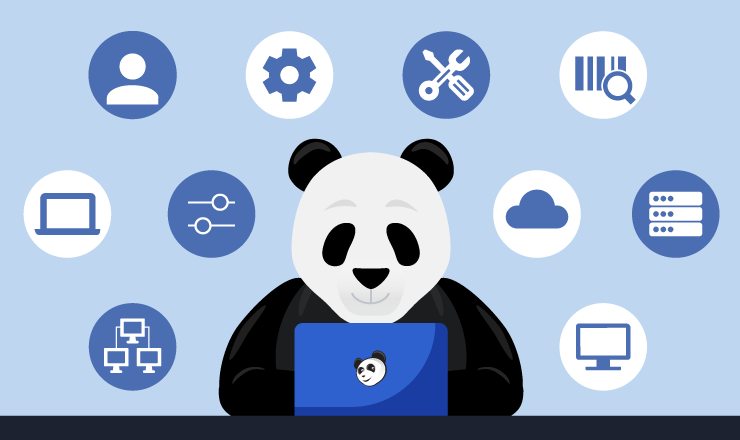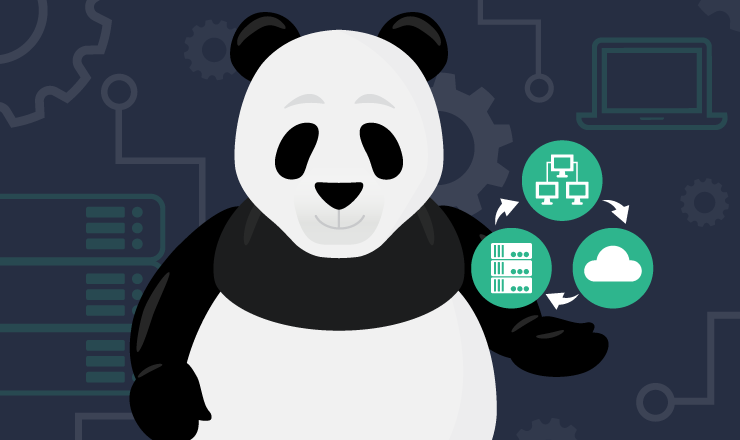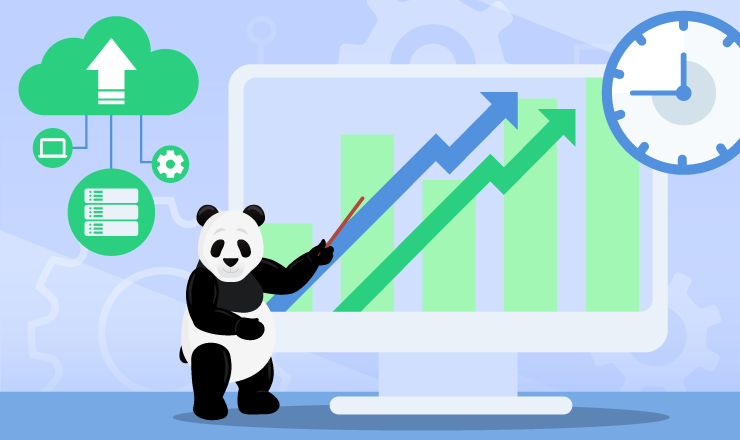Software Asset Management Best Practices

Take Control of Your Assets
A personalized demo is just one click away.
With companies in nearly every sector monitoring more IT assets than ever before - and cloud technology playing an ever-more prominent role - Software Asset Management, otherwise known as SAM, has become an indispensable part of operations.
Why Software Asset Management (SAM)?
Software Asset Management is "a business practice that takes ownership of software usage by monitoring spend, deployment, software licenses, and license compliance for all end-users involved in the application."
More specifically, Software Asset Management best practices help administrators manage and organize their IT assets by automating tasks related to their software management – for example, patch and license management; inventory tracking, which includes identifying inefficient use of licensed software; establishing policy; and lifecycle management.
SAM best practices
Companies need an effective and efficient way to harness all of this technology, stay up to date with required software updates, ensure compliance, reduce their exposure to potential cybersecurity risks – for example, some shadow IT systems -- and protect their technology investment. They also need an effective way to monitor asset usage. IT assets that are sitting idle, aren't being used properly, or are lost or stolen affect the bottom line.
To drive this point home, imagine the picture painted by Erwin Yuen, managing director of Deloitte Risk and Financial Advisory's Software Asset Management practice:
"If a company does not have a good picture of their software landscape," he says, "they could end up renewing 50 million dollars of licenses when they are truly only using $20 million worth of licenses."
Clearly, no organization can successfully implement this technology without a set of software asset management best practices.
Mitigating risk
Cybersecurity is top of mind for companies and organizations. "Given that many businesses migrated to new SaaS platforms this year, there are a number of new alerts and blind spots that an organization's security team may not have prepared employees to handle. User-based attacks take advantage of those miscues and can make businesses pay dearly," says writer Rob Scott in a Jan. 7, 2021, article for SecurityMagazine.com ("People, processes, and tech: 2021's top cybersecurity priorities").
Shadow IT, a term that describes technology that has been added to an organization's system outside of official channels and subsequently isn't managed by its IT team puts organizations and their data at great risk.
If a company isn't aware that a department or individual is using a particular application, its IT department can't properly manage it, and potential risks can become major breaches. Companies also may face such consequences as loss of intellectual property, missed procurement savings, and increased licensing costs. Software asset management promotes the disclosure of all applications used by a company at any given time, which in turn also promotes greater accountability throughout the organization – and mitigates the risk of shadow IT.
How is SAM implemented?
If you're ready to rein in your technology spend and introduce software asset management best practices within your organization, here are some tips to get started, courtesy of Holly Hunt, content marketing manager for Track Resources, and blogger Joe the IT Guy.
Review internal processes
Survey the landscape by speaking with your service desk, IT managers, etc., to determine if there's a single point of contact for making software requests or if anyone has local admin rights, which can make it easy for shadow IT to creep into your organization. You'll also want to speak to stakeholders within your company about their IT needs for the coming year.
Check for loopholes
Audit your current tools to pinpoint where you might have duplicates, idle or underutilized assets or software.
Identify costs and needs
Draw up a budget for your software and IT assets, outlining must-haves as well as nice-to-haves. Research the possibility of any less expensive alternatives.
Streamline workflows
Establish a uniform set of standards for tracking your software license inventory. Determine the most useful metrics for your organization, and train someone to capture and analyze them. Can you include expiration and renewal dates and set up custom alerts to remind you of upcoming expirations? You'll need to make updates to these records when your software usage changes.
Set clear expectations
Introduce guidelines that each employee must follow when purchasing a new software. In doing so, you'll avoid shadow IT and create an alert when any new software has been purchased, so nothing flies under the radar. You'll also want to ask software vendors to confirm in writing during your negotiations what kind of proof of license you need – for example, receipts and invoices, software license certificates, release documentation or training material, to name a few possibilities.
Maintain strong relationships with software vendors
Selecting software vendors is a careful process that involves a thorough evaluation of your current and anticipated needs (check out these tips for evaluating software vendors). Once you've formed that partnership, you'll want to keep them in the loop about your business needs and ensure you've communicated clearly how you plan to measure success at your organization.
ITSM vs. ITAM
Much like the always-evolving world of technology in which we live, over time, companies have to make adjustments to their approach to IT asset management. Some are moving toward a model in which ITSM (IT Service Management) and ITAM (IT Asset Management) coexist.
ITSM focuses strictly on the operational phase of an IT asset's lifecycle and provides insight into asset performance. ITAM focuses on the entire lifecycle of the IT asset, is concerned with minimizing financial, operational, and legal risks, and is intended to lower the expenses normally incurred during that lifecycle, which may include licensing, support, and/or maintenance costs.
ITSM is centered on the challenge of how to maximize the value and delivery of IT services, including incident management, effective change management around modifications to the IT environment within an organization, and configuration management – specifically, the relationship between IT assets.
Other tips to consider
Additional smart practices for asset management that companies should consider implementing for time and cost savings include:
Regular IT audits
Even the largest organizations should at all times know what IT assets they have, what condition those items are in, and where those assets are located. Software vendors likely will conduct software compliance audits from time to time, as well, to make sure that their applications are being used correctly. Compliance failure will almost certainly result in a steep fine, so companies that run regular IT audits on their end can help avoid these types of penalties. Audits also promote software optimization – in other words, organizations are able to avoid paying for software licenses they don't need.
Categorizing assets
Organizing their assets into categories like division/department, employee, task, value, or specific use help companies and organizations track items down much more quickly.
Supporting details
IT asset management becomes more comprehensive when system users add such details as supporting documents, photos, videos, and/or voice notes, as well as customized scheduled reminders about critical software updates, for example.
Comprehensive data
Companies and organizations would be wise to take the time to carefully record supporting detail for their IT fixed assets – for example, the number of software licenses, expiration and renewal dates, compatible operating systems, maintenance histories, and more.
User-friendly system
A company's IT asset management efforts are only effective if employees use the designated system. Overly complicated platforms that require extensive training to understand are less likely to gain widespread employee adoption. An intuitive interface and streamlined approach can go a long way toward encouraging widespread adoption.
Broader IT asset management program
An organization's SAM efforts should be one part of a more extensive asset management program that outlines official policies and expectations around lifecycle management, such as:
- software requests and procurement
- software updates
- audit schedules
- equipment refresh schedules
- license renewal schedules
- when IT assets should be discontinued from use
- how to manage the software that isn't needed anymore
Choosing the Right SAM Tool
Asset Panda offers a rich selection of integrations to meet clients' needs. From Microsoft System Center Configuration Manager (SCCM), OneLogin, Google Workspace (formerly G Suite), and Google Device Manager to Zendesk, Microsoft Active Directory, Lansweeper, and Jamf Cloud, Asset Panda's asset lifecycle management platform gives companies the ability to keep data up to date and unified across their respective networks. We also offer access to an API for building custom integrations.
To give you a clearer picture of how asset management integration might work, consider this example: With the Zapier integration, users are notified via email anytime someone updates an asset record or uploads a new file in an inventory database stored in another location. That kind of automated function removes the burden of having to maintain those updates manually.
Here's another example: Asset Panda's integration with Microsoft Azure Active Directory opens a one-way channel that enables administrators to automatically sync user information from Azure into the Asset Panda system. What's the value in that? The integration helps to eliminate duplicate user/employee data entry, keeps your employees' group up to date automatically, reduces the time required to check out equipment to new users, and helps grant access to Asset Panda quickly for new users.
There are some considerations you may wish to keep in mind related to cost variation and performance issues before selecting an asset management or other integration.
Asset Panda outclasses the competition in these areas and more. Users from a multitude of industry sectors appreciate the ability to track and manage the complete lifecycle of their assets using only the smartphones they already carry. A built-in scanner eliminates the need for separate handheld scanners, and the app allows for an unlimited number of users. Asset Panda's intuitive, streamlined interface makes getting up to speed easy; onboarding requires no special training. The app is highly configurable, allowing you to manage your assets any way you want.
Knowing the assets you have and how they're used can help you eliminate shadow IT, ensure that your employees are complying with software license criteria, reduce security risks and better manage your software vendors. To learn more about Asset Panda, sign up for a free demo with an asset tracking expert today!
Take Control of Your Assets
A personalized demo is just one click away.
Related News & Press

Learn more from an Asset Panda expert
Get a FREE consultation with an asset tracking expert to find out how you can transform your asset tracking.
Contact our Sales Team at (888) 928-6112


